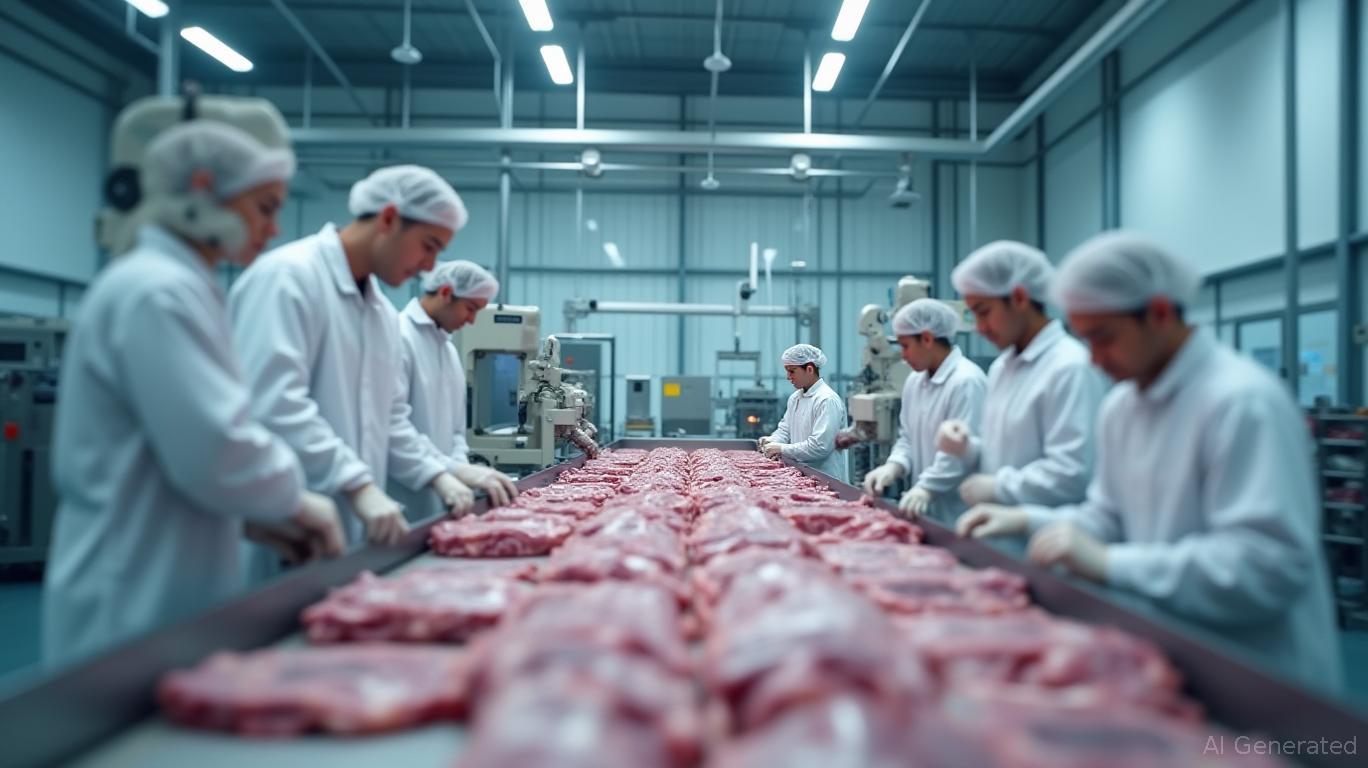Beefed-Up Risks, Bigger Opportunities: Navigating Meatpacking Labor Shortages and the Shift to Automation
The U.S. meatpacking industry is in crisis. Recent immigration enforcement raids, most notably the April 2025
operation at Nebraska's Glenn Valley Foods plant—which detained nearly half its workforce—have exposed the fragility of an industry reliant on immigrant labor. With production at the Omaha facility plummeting to just 20% of normal capacity, the ripple effects are clear: higher beef prices, strained supply chains, and a growing imperative to rethink labor dependency. For investors, this isn't just a short-term disruption—it's a structural shift creating opportunities in automation and alternative proteins while leaving traditional meatpackers vulnerable to volatility.The Labor Crunch, Explained
The U.S. meatpacking sector employs over 500,000 workers, with over half being immigrants, many undocumented. A Center for Economic and Policy Research study notes that 50% of meatpacking employees are foreign-born, a figure that rises to 60% in states like Nebraska and Iowa. Recent ICE raids, such as the Glenn Valley incident, have exacerbated existing shortages caused by pandemic-era attrition and stricter visa policies. The result? A 15–20% gap in meatpacking staffing, per industry estimates, with facilities like Tyson Foods' plants operating at reduced capacity.
The impact on production is stark. Beef processing capacity has dropped by up to 10%, while pork processing has been slashed by 20% in some regions. This bottleneck has pushed retail beef prices to record highs—up 7.6% year-over-year by February 2025—and threatens further inflation as cattle inventories shrink. The USDA forecasts a 2.1% decline in U.S. beef production in 2025, the smallest herd since the 1940s.

Investing Through the Supply Chain: Risks and Rewards
The Volatility Play: Meatpackers at a Crossroads
The stocks of companies like Tyson Foods (TSN) and JBS USA (JBSS) are caught in a vise. On one hand, rising beef prices and strong demand could boost short-term profits. On the other, chronic labor shortages and operational disruptions pose existential risks.
Both companies have seen their shares fluctuate wildly in 2025, with TSN down over 15% year-to-date as production bottlenecks persist. Meanwhile, JBS faces added headwinds from environmental lawsuits and a tarnished reputation after the Nebraska raid. Investors here must weigh near-term price spikes against long-term structural challenges.
Automation: The Long-Term Solution
The labor crisis is accelerating the adoption of automation. Companies like Halcon Robotics—a leader in AI-driven meat-processing robots—are positioned to capture the $12 billion meatpacking automation market. Halcon's systems can perform tasks like carcass cutting and packaging with precision, reducing reliance on scarce manual labor. While the firm is still private, its valuation has surged to $1.8 billion after securing funding from investors like SoftBank, signaling a future where automation firms dominate this space.
Alternative Proteins: A Labor-Light Alternative
The rise in beef prices is also driving demand for plant-based and lab-grown proteins. Companies like Beyond Meat (BYND), which reported a 22% revenue jump in Q1 2025, are benefiting as consumers seek affordable alternatives. Beyond Meat's products require no live animal processing, sidestepping labor shortages entirely. Meanwhile, startups like Memphis Meats (a leader in cell-cultured meat) are advancing technologies that could further reduce the industry's reliance on traditional supply chains.
Historically, a strategy of buying BYND following positive revenue surprises has underperformed, yielding a -54.49% average return from 2020–2025. This reflects a Sharpe ratio of -0.26 and a maximum drawdown of -82.49%, underscoring the stock's volatility and the risks of relying solely on earnings momentum.
The Bottom Line: Hedge Against Meat, Bet on Tech
The meatpacking sector's labor crisis is a double-edged sword. While short-term volatility in Tyson and JBS stocks could offer speculative opportunities, the long-term narrative favors disruptors. Investors should:
- Avoid overexposure to traditional meatpackers, given their reliance on an unstable labor pool and environmental risks like drought-driven feed shortages.
- Embrace automation stocks, particularly those like Halcon Robotics (when public) that can reduce labor dependency.
- Position for alternative proteins, with Beyond Meat and similar firms poised to capture a growing market share—though historical backtests reveal that revenue-driven trading strategies may carry disproportionate risk.
The era of meatpacking as a low-tech, labor-intensive industry is ending. For investors, the path to profit lies in backing the technologies and innovations that can weather—and capitalize on—the storm.

Comments
No comments yet